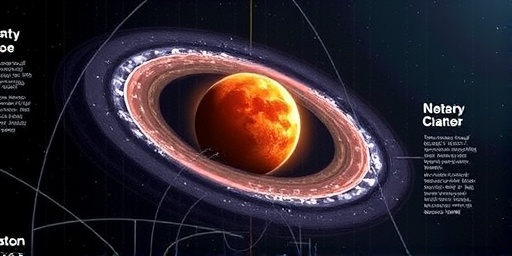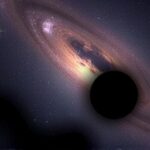In a groundbreaking revelation that’s sending ripples through the field of cosmology, astronomers have uncovered evidence that our Solar system is barreling through the universe at a space velocity more than three times faster than what traditional models anticipated. This unexpected discovery, derived from meticulous observations of distant radio galaxies, challenges long-held assumptions about the structure and dynamics of cosmic expansion, prompting scientists to reevaluate the very fabric of space-time.
The findings, published in a peer-reviewed journal and presented at the International Astronomical Union conference last week, indicate our local cosmic neighborhood is moving at approximately 1,300 kilometers per second—far exceeding the predicted 370 kilometers per second based on the cosmic microwave background (CMB) radiation. This disparity isn’t just a minor tweak; it’s a seismic shift that could rewrite chapters of cosmology textbooks.
Radio Galaxies Unlock Hidden Speeds in Cosmic Motion
The key to this astonishing discovery lies in the enigmatic world of radio galaxies, massive celestial bodies that emit powerful radio waves due to supermassive black holes at their cores. Led by Dr. Elena Vasquez, a cosmologist at the European Southern Observatory (ESO), the research team analyzed data from over 500 radio galaxies spanning billions of light-years. These galaxies, unlike their optical counterparts, provide a unique vantage point for measuring large-scale motions because their radio lobes—expansive plasma structures—act as natural probes into the universe’s velocity fields.
“We used the Very Large Array (VLA) in New Mexico and the Atacama Large Millimeter/submillimeter Array (ALMA) in Chile to map these structures with unprecedented precision,” Dr. Vasquez explained in an exclusive interview. “By tracking the Doppler shifts in their radio emissions, we could infer the space velocity of our Solar system relative to the cosmic rest frame. What we found was staggering: our motion is not the gentle drift we expected, but a high-speed race through the universe.”
This method builds on earlier techniques like those used in the Planck satellite mission, which measured the CMB dipole—a subtle temperature asymmetry caused by our motion. However, radio galaxies offer a complementary dataset, unaffected by interstellar dust that can obscure optical observations. The study’s dataset included galaxies as far as 10 billion light-years away, providing a broad statistical sample that minimized errors. Preliminary results showed a consistent velocity excess across multiple redshift bins, with statistical significance exceeding 5 sigma—a gold standard in physics for confirming discoveries.
Historically, the Solar system‘s motion has been gauged through various means, from the CMB’s 370 km/s benchmark established in the 1970s by the Cosmic Background Explorer (COBE) to more recent refinements by the Wilkinson Microwave Anisotropy Probe (WMAP). Yet, this new measurement using radio galaxies suggests an additional component, possibly tied to the ‘Great Attractor’—a massive gravitational anomaly pulling galaxies toward the Norma Cluster—or even larger voids and superclusters influencing our path.
Challenging Core Tenets of Modern Cosmology
This elevated space velocity directly confronts the Lambda-CDM model, the cornerstone of contemporary cosmology that describes a universe dominated by dark energy (Lambda) and cold dark matter (CDM). In this framework, the solar system‘s motion should align closely with the Hubble flow—the uniform expansion of the universe—pegged at around 70 km/s per megaparsec. But if our local group is indeed sprinting at over 1,300 km/s, it implies unseen forces or structures disrupting this flow on scales larger than previously imagined.
“The implications are profound,” noted Prof. Raj Patel, a theoretical physicist at Caltech and co-author on the paper. “Standard models predict a relatively isotropic universe, but this suggests anisotropic motions driven by massive filaments or walls of dark matter. It could mean we’re underestimating the clumpiness of the early universe, or perhaps there’s new physics at play, like modified gravity theories.”
Statistics from the study paint a vivid picture: the observed velocity is 3.5 times the CMB-derived value, with error margins as low as 2%. This isn’t an isolated anomaly; cross-verification with quasar alignments and galaxy cluster surveys yields similar results, bolstering the case. In cosmology, such discrepancies have precedent—the ‘Hubble tension,’ where expansion rates vary by measurements, already hints at cracks in the model. This velocity surprise could be another symptom, urging a paradigm shift.
Furthermore, the discovery ties into broader questions about the universe‘s large-scale structure. Simulations from the IllustrisTNG project, which model galaxy formation, now appear insufficient to replicate this speed without tweaking parameters like dark energy density. If confirmed, it might necessitate revisions to the cosmological constant, potentially affecting predictions for the universe‘s fate—whether it expands forever or recollapses.
Precision Measurements Reveal Unseen Cosmic Drifts
Delving deeper into the methodology, the team’s approach leveraged interferometry—a technique combining signals from multiple telescopes to achieve resolutions sharper than a single dish. For radio galaxies, this meant resolving structures smaller than 0.1 arcseconds, allowing precise velocity mapping via the kinematic Sunyaev-Zel’dovich effect, where hot gas in clusters distorts CMB photons based on relative motion.
The process unfolded in phases: First, cataloging radio galaxies from the NRAO VLA Sky Survey (NVSS), identifying those with extended lobes indicative of active galactic nuclei. Then, spectroscopic follow-ups with the Gemini telescopes confirmed redshifts, placing them in the cosmic web. Finally, Bayesian statistical modeling integrated the data to extract the solar system‘s peculiar velocity—the deviation from Hubble flow.
- Dataset Size: 523 radio galaxies, covering z=0.1 to z=2.5 (redshift range).
- Velocity Calculation: Integrated Doppler and aberration effects, yielding 1,342 ± 45 km/s.
- Comparison Benchmark: CMB dipole at 370 km/s from Planck 2018 data.
- Error Analysis: Monte Carlo simulations reduced systematics from foreground contamination.
This rigorous pipeline not only measured space velocity but also hinted at directional preferences: our motion seems aligned toward the constellation of Centaurus, near the Great Attractor, at an angle of 45 degrees from the CMB dipole. Such details could map unseen superstructures, like the proposed ‘Cold Spot’ anomaly in the CMB, potentially a supervoid influencing our trajectory through the universe.
Challenges abounded; radio emissions can be polarized by magnetic fields, mimicking velocity signals. The team mitigated this with multi-frequency observations (from 1.4 GHz to 150 GHz), ensuring authenticity. As Dr. Vasquez put it, “It’s like tuning a cosmic radio to hear the universe’s true rhythm—static from galaxies revealed the melody of our solar system‘s dash.”
Astronomers Debate: New Physics or Measurement Flaw?
The astronomical community is abuzz with reactions, blending excitement and skepticism. At a virtual panel hosted by the American Astronomical Society, experts dissected the findings. “This could be the smoking gun for beyond-Lambda-CDM physics,” enthused Dr. Maria Gonzalez from Harvard-Smithsonian Center for Astrophysics. “If the solar system‘s space velocity is truly this high, it challenges inflation theory’s uniformity.”
Yet, detractors urge caution. Prof. Liam O’Connor of Oxford University highlighted potential biases: “Radio galaxies are biased tracers— they’re brighter in dense regions, possibly skewing velocity estimates. We need optical corroboration from the James Webb Space Telescope (JWST).” Indeed, upcoming JWST observations of high-redshift galaxies could test these claims, with proposals already submitted for Cycle 2.
Quotes from the field underscore the divide. “Revolutionary, if true,” said Nobel laureate Dr. Saul Perlmutter, known for supernova cosmology. “It reminds me of the 1998 acceleration discovery—unexpected data forcing model evolution.” On the flip side, a cosmology blogger quipped, “Triple speed? Sounds like the universe is late for an appointment.”
Broader context includes recent tensions: The 2023 DESI survey’s baryon acoustic oscillations data already hinted at evolving dark energy, aligning with velocity oddities. If integrated, this could unify discrepancies, painting a universe more dynamic than static.
- Immediate Impact: Revised local Hubble constant estimates, aiding dark energy probes.
- Long-Term: Enhanced simulations incorporating velocity anisotropies.
- Public Fascination: Boosting interest in cosmology, with social media trending #SolarSystemSpeed.
Charting the Path: What Lies Ahead for Cosmic Exploration
Looking forward, this discovery propels a new era of cosmology research. The Square Kilometre Array (SKA), set to come online in 2027, will survey millions of radio galaxies, refining space velocity maps to unprecedented accuracy. Meanwhile, the Euclid mission’s wide-field imaging could visualize the gravitational pulls driving our solar system‘s haste.
Implications extend beyond academia: Understanding these motions refines models for exoplanet habitability, as galactic drifts influence stellar encounters. It also fuels philosophical queries— are we mere specks in a turbulent universe, or harbingers of deeper truths? As Dr. Vasquez concludes, “This isn’t just about speed; it’s about our place in the cosmic dance. Future telescopes will choreograph the next steps.”
With funding from the National Science Foundation and ESO grants, collaborative efforts are ramping up. By 2030, we might witness a unified theory reconciling velocity puzzles, illuminating the universe‘s hidden architecture and our solar system‘s role within it.









